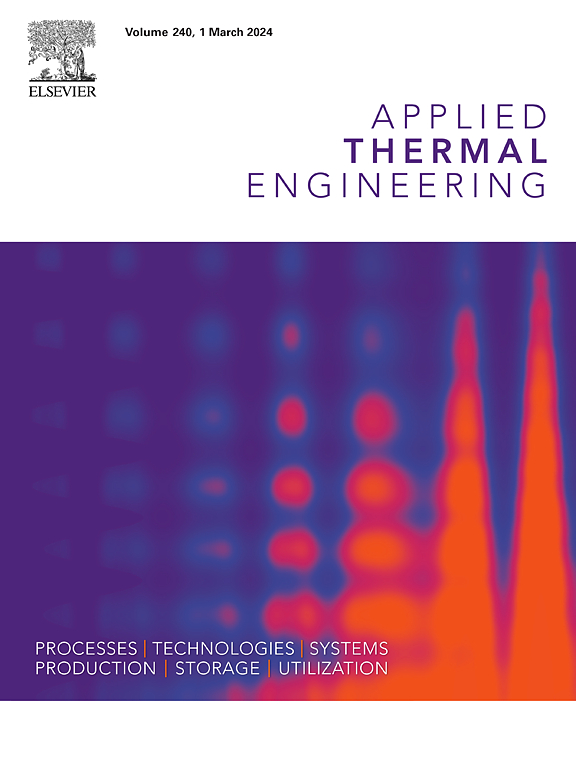IF 6.1
2区 工程技术
Q2 ENERGY & FUELS
引用次数: 0
摘要
空气压缩机的水冷组件为提高汽车燃料电池的性能提供了一条可行的途径。由于空气压缩过程中会产生大量热量,空气压缩机的效率通常不易提高。为了恢复功率并防止气体温度过高,本文提出了一种用于汽车燃料电池涡轮式空气压缩机的优化水冷涡管。首先,建立了与叶轮集成的涡壳三维数值模型,经与测量的等熵效率和压力比进行比较,发现平均绝对误差分别为 0.0669 和 0.0117。然后,在涡壳外壁构建了一个封闭的流动通道,形成了初始水冷涡壳结构。然后在不同的冷却水入口条件下对初始水冷涡流进行数值模拟分析。使用 Box-Behnken 方法生成水冷涡流结构的设计空间,并使用二阶函数拟合响应面模型。然后将响应面模型作为多目标遗传算法的目标函数,执行全局优化并生成帕累托前沿。根据最优解集确定水冷涡管结构的参数组合。结果表明,与初始水冷涡流相比,优化水冷涡流的等熵效率提高了 12.43%,出口气体温度降低了 1.29%。所提出的水冷涡管及其设计方法可提高汽车燃料电池空气压缩机的整体性能。本文章由计算机程序翻译,如有差异,请以英文原文为准。
Numerical simulation and optimized design of water-cooled volute for turbine-based air compressor used in automotive fuel cells
Water-cooled components of air compressor provide a feasible way to improve the performance of automotive fuel cells. Due to the large heat generation during air compression, the efficiency of air compressor is normally not easily enhanced. To recover power and prevent excessive gas temperature, this paper has proposed an optimized water-cooled volute for the turbine-based air compressor used for automotive fuel cells. Firstly, a three-dimensional numerical model of the volute integrated with impeller has been developed, upon comparison with the measured isentropic efficiency and pressure ratio, the mean absolute errors were found to be 0.0669 and 0.0117, respectively. Then, a closed flow passage on the volute outer wall is constructed to form an initial water-cooled volute structure. Numerical simulation analysis is then conducted on the initial water-cooled volute under different cooling water inlet conditions. The Box-Behnken method is used to generate the design space for the water-cooled volute structure, and a response surface model is fitted using a second-order function. The response surface model is then used as the objective function of multi-objective genetic algorithm to perform global optimization and generate the Pareto front. The combinations of parameters for the water-cooled volute structures are determined from the optimal solution set. The results showed that the isentropic efficiency of the optimized water-cooled volute was improved by 12.43 % compared to the original volute, and the outlet gas temperature was reduced by 1.29 % compared to the initial water-cooled volute. The proposed water-cooled volute and its design method can enhance the overall performance of the air compressor for automotive fuel cells.
求助全文
通过发布文献求助,成功后即可免费获取论文全文。
去求助
来源期刊

Applied Thermal Engineering
工程技术-工程:机械
CiteScore
11.30
自引率
15.60%
发文量
1474
审稿时长
57 days
期刊介绍:
Applied Thermal Engineering disseminates novel research related to the design, development and demonstration of components, devices, equipment, technologies and systems involving thermal processes for the production, storage, utilization and conservation of energy, with a focus on engineering application.
The journal publishes high-quality and high-impact Original Research Articles, Review Articles, Short Communications and Letters to the Editor on cutting-edge innovations in research, and recent advances or issues of interest to the thermal engineering community.
 求助内容:
求助内容: 应助结果提醒方式:
应助结果提醒方式:


